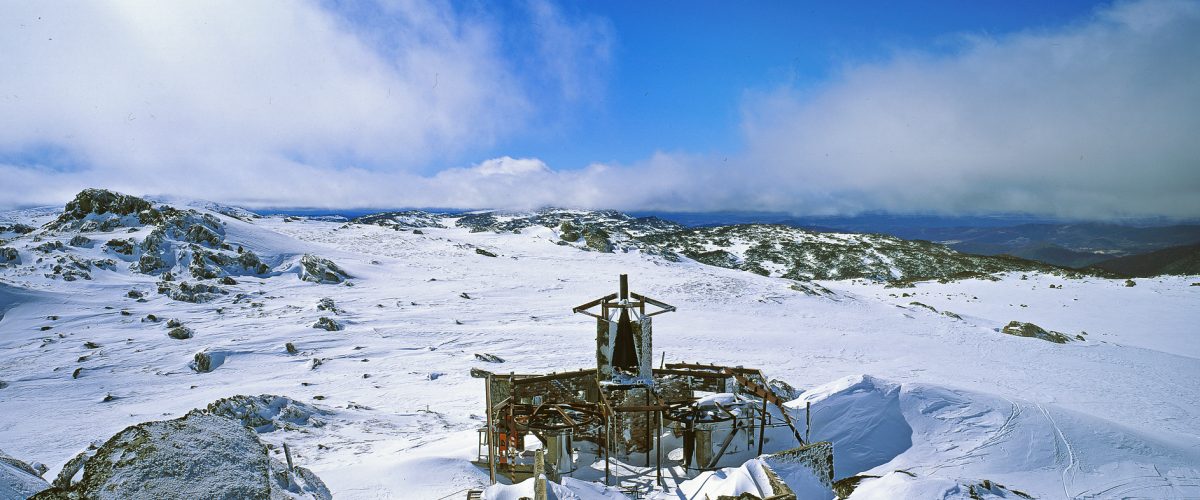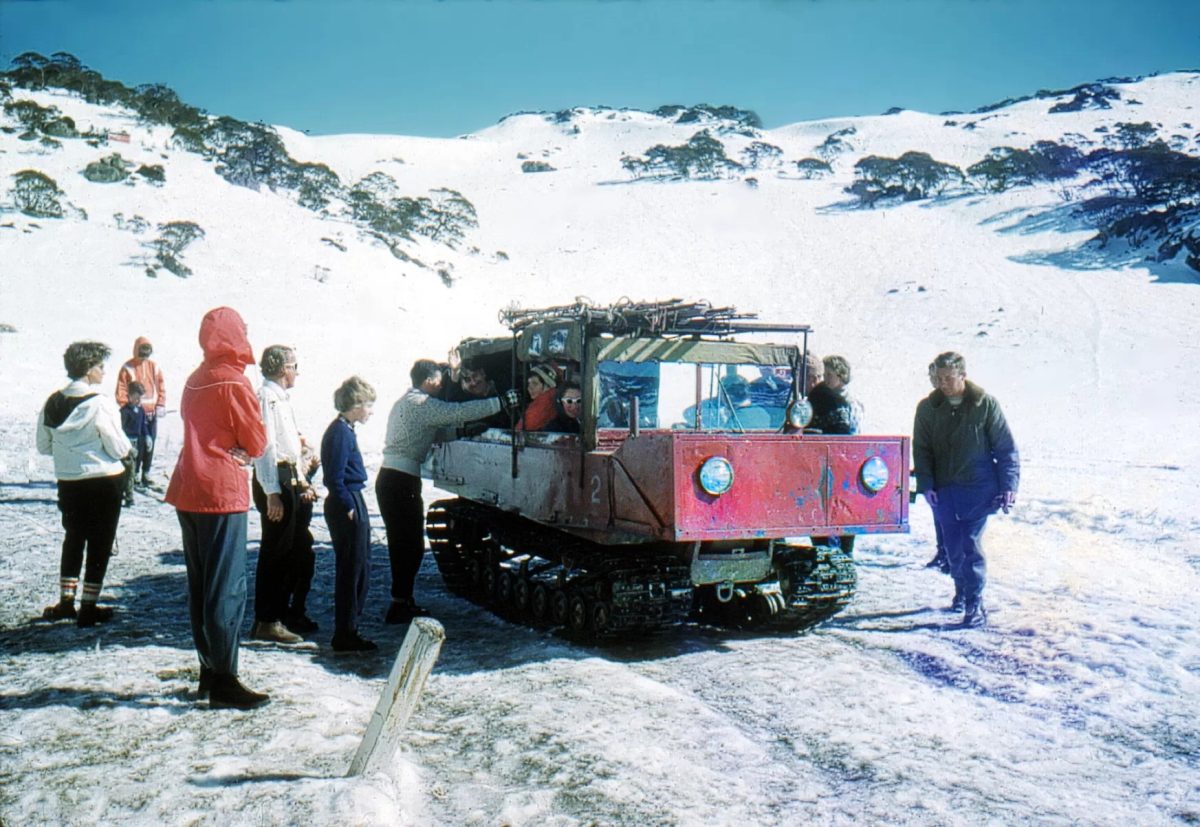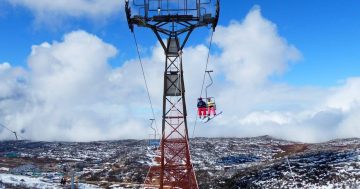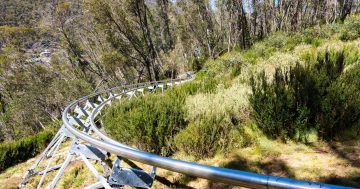
All that’s left of the longest chairlift in the world are a few scattered ruins dusted by the winds that killed it. Photo: Barny Wrensford – Perisher Historical Society.
There are two ways to reach the Snowy Mountains ski resort of Charlotte Pass in winter: an oversnow, which ploughs the snowed-in Kosciuscko road between June and September, or walking.
But for a short time, there was a third way, and it was the world’s longest chairlift.
Built between 1962 and ’64, running nearly 6 km from the Alpine Way near Thredbo to the top of Mt Stilwell, it ascended more than 700 metres.
If it still operated today, it would rank as one of the top-10 longest chairlifts in the world, and at 2054 metres above sea level, it still holds the record for Australia’s highest lifted point.
Built for £1.2 million (about $41 million today), it was an ambitious project to expand the resort and open up the area to year-round tourism. It was not only the first of its kind in Australia, but in the world.
But just two years later, in 1966, the lift was shuttered for good. Today, there is nothing but a few scattered ruins.
Why the project was abandoned is the subject of a long-running urban myth in the area.
Ask locals and they will often tell you the story of the problem-prone lift that ran for just two seasons, until an unfortunate skier stranded on the chair for hours tumbled off the other end dead, the heat sucked out of his body by the range’s notoriously frigid winds.
Unfortunately for fans of the macabre, the story of the frozen skier is just a story. But it has an element of truth.
In January 1965, 21 riders were trapped for 30 minutes in high winds, which knocked several chairs from the cable.
No one was injured, but two hikers narrowly avoided being hit by a falling chair.
That wasn’t the only time people narrowly escaped injury or death on the line.

Ruins of the chairlift’s top station, which housed the Mt Stilwell restaurant. Photo: Barny Wrensford – Perisher Historical Society.
About six months into operation, two managers were almost killed when a chair wrenched itself from the line and crumpled into the jagged rocks below. Falling chairs were a common occurrence.
Wind stoppages were so constant that the lift was on hold for two months in 1964. Perisher Historical Society president Peter Southwell-Keely remembers the chairlift being great, except when it was windy.
“Where the restaurant was on the top of the Crackenback Ridge was very exposed, and the wind just tore through there, and it made it very difficult to operate the chairlift,” he said.
“It started operation in 1964, which was probably one of the biggest snow years in the whole of the 20th century. There were endless blizzards and snow, and it was just a miserable year, not from a snowpack point of view, but from a conditions point of view. It was just terrible. And so in the first year of its operation, it had these shocking conditions.”
Part of the problem, according to Mr Southwell-Keely, who used to help dig out the chairlifts from snowdrift for a free day ticket, was that it was too ambitious for its time. Built on the windiest part of the hill, the technology of the day just couldn’t cope.
The conditions were so bad that rescuers developed what historian Rick Walkome, in his book Skiing Off the Roof, described as “bazooka spear guns” to fire rescue ropes attached to sharpened broom handles to help stranded riders.
Perhaps the truly remarkable story is that no one died.
Delays plagued the chairlift due to the area’s notoriously extreme winds, which frequently caused chairs to crash into pylons, damaging and derailing cables.
It was a problem architects should have expected, given Charlotte Pass had been constructed where it was partly to deal with the main range’s high winds.
Less than a year into operation, at a shareholder meeting, the Kosciuszko Chalet Ltd approved extensive renovations to try to deal with the winds, admitting the chairlift had proved an economic burden.
The writing was already on the wall. By June 1966, the resort was bankrupt. It and its record-breaking lift were sold to new owners, who shut it down, favouring their oversnows to bring tourists to the resort.

The oversnows of the past were not as comfortable as today’s, but they got the job done. Photo: Glover Kenyon – Perisher Historical Society.
The lift towers were dismantled, but the top station was left largely untouched, slowly crumbling into the surrounding area until clean-up operations in the 1990s removed most of what was left.
Intrepid hikers and ski tourers can still reach the ruins, which include the foundations and the old diesel motors, but there are no tracks or signs pointing to the ill-fated terminus of what was briefly the longest chairlift in the world.
More details about the hut can be found on the Kosciuszko Huts Association website and through the Perisher Historical Society.














